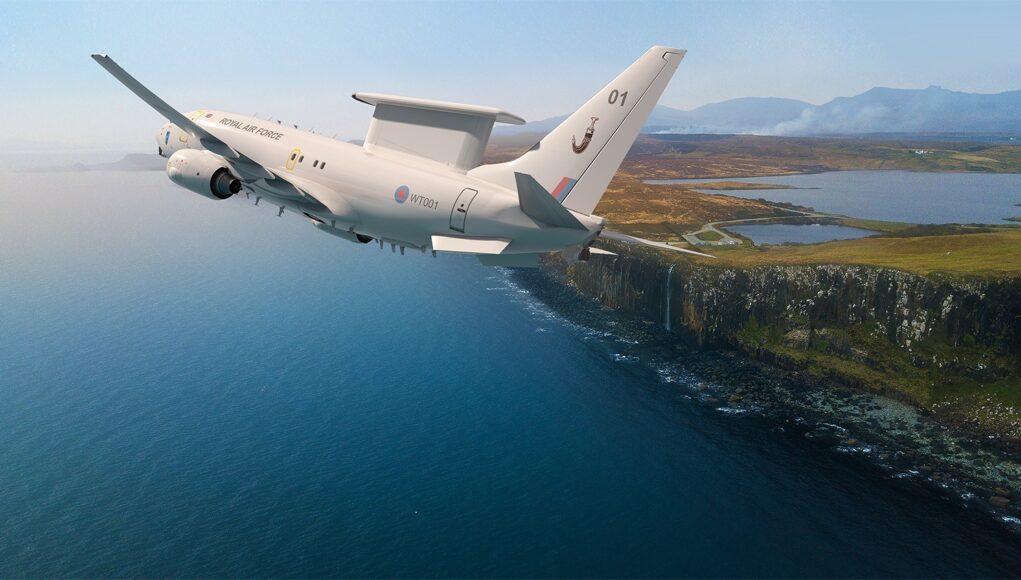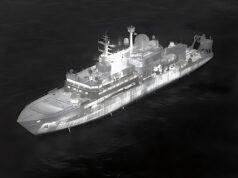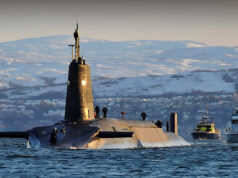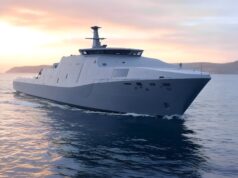The procurement of advanced military platforms represents a cornerstone of national defence strategy, yet it often exposes systemic frailties within acquisition processes. In the United Kingdom, the Ministry of Defence (MoD) has long struggled to deliver capabilities on time, within budget, and to the required specifications.
The Boeing E-7 Wedgetail programme illustrates these problems. Intended as the Royal Air Force’s (RAF) next-generation airborne early warning and control (AEW&C) platform, the E-7 was meant to replace the ageing E-3D Sentry fleet.
This article is the opinion of the author and not necessarily that of the UK Defence Journal. If you would like to submit your own article on this topic or any other, please see our submission guidelines.
What began as a promising acquisition in 2019 has instead turned into a sequence of delays, cost escalation, and capability dilution.
This essay examines the E-7 Wedgetail programme using material from official reports, parliamentary inquiries, and specialist analyses. It outlines the original requirements and the envisaged role of the aircraft. It then explores flaws within the procurement process, including cost underestimation, weak risk management, and optimism bias. The discussion includes the reduction from five to three aircraft despite the prior purchase of five AESA radar sets. The analysis also addresses the impact of delayed decision making, which influenced the United States Air Force (USAF) and NATO partners to reconsider or cancel their own E-7 plans as cheaper alternatives emerged. Despite mounting warnings from the National Audit Office (NAO) and parliamentary committees, the RAF and MoD continue to project confidence.
Further examination reveals missed milestones, unresolved technical problems such as questions over radar power-on testing, and certification complications once the aircraft arrived in the UK. The decision by Marshalls of Cambridge to withdraw from the engineering work due to cost and complexity underscores structural weaknesses in the programme. The E-7 now stands as another example of MoD procurement failure, marked by unclear initial design, inconsistent leadership, and weak management oversight.
Original requirements and the E7’s intended role
The origins of the E-7 programme lie in the 2015 Strategic Defence and Security Review (SDSR), which called for the modernisation of the RAF’s AEW&C fleet. The E-3D Sentry, derived from the 707 and operational since the 1990s, had become increasingly outdated, expensive to maintain, and vulnerable to modern threats. The platform’s analogue systems and rotating radome imposed clear limitations. The SDSR required a successor capable of persistent and wide-area surveillance for joint operations, NATO commitments, and broader power projection.
The MoD’s Initial Operating Capability business case defined three priorities: improved situational awareness, interoperability, and long term adaptability. The E-7 was selected as a militarised Boeing 737NG equipped with a fixed MESA radar that provides 360 degree coverage through electronic beam steering. The radar can track thousands of targets, conduct simultaneous air and maritime surveillance, and handle electronic warfare environments more effectively than the E-3D.
Within the RAF’s operational concept, the E-7 was intended to act as a command and control platform that integrates data from satellites, drones, and ground sensors. The requirement for five aircraft was tied to maintaining continuous 24/7 coverage with a predictable maintenance and rotation schedule. Sovereign control and upgradability were central to the concept. The procurement assumptions, however, relied on a stable process that never materialised.
Flaws in the procurement process
The acquisition reflects a series of structural weaknesses familiar across MoD programmes. The House of Commons Defence Committee’s 2023 report criticised the decision to avoid open competition and move directly to a single-source negotiation with Boeing. Officials justified this as necessary due to urgency and the platform’s apparent maturity, yet the justification proved thin when measured against later delays.
The Full Business Case remained unsigned for years, and negotiations over in-service support dragged on without resolution. Supply chain risks were underestimated, even though Boeing’s commercial difficulties with the 737 were visible before the contract was finalised. The decision to buy five radars without securing stable airframe numbers locked the MoD into unnecessary expenditure.
Turnover among Senior Responsible Owners caused further instability. Warnings about affordability did not reach ministers early enough, contributing to the 2021 decision to reduce the fleet. Although the cut provided marginal short-term savings, it increased operational risk and raised questions about the integrity of earlier planning.
Cost misunderstandings, weak risk management, and optimism bias
The NAO has repeatedly highlighted a lack of affordability within MoD financial planning. For the E-7, early projections placed whole life costs at 2.5 billion pounds for five aircraft. After the fleet was reduced to three, projected cost fell only slightly because much of the expenditure was already committed. Cost modelling did not adequately account for inflation in 737 production or exchange rate volatility.
Risk management failures contributed to the programme’s deteriorating schedule. Certification issues were downplayed, even though alignment between FAA, CAA, and MAA standards is notoriously complex. The first aircraft arrived in the UK without FAA sign off, triggering an extensive recertification process. Modification work proved significantly more demanding than predicted, and labour hour estimates at STS Aviation rose sharply.
The Public Accounts Committee has repeatedly described an ingrained optimism within MoD projections. The E-7 followed this pattern. The Integrated Project Team underestimated the scale of required modifications and the fragility of supply chains. The result is a diminished fleet that required full infrastructure investment yet cannot achieve the planning assumptions of the original requirement.
International effects of delays and uncertainty
Long delays in UK decision making had consequences beyond national borders. While Australia’s fleet reached full capability years earlier, the UK spent years resolving contractual and engineering issues. The USAF’s 2025 decision to cancel its large E-7 order reflected concerns over cost, survivability, and relevance in contested environments. NATO abandoned its multinational E-7 plan soon after.
The collapse of these international commitments erased hoped-for economies of scale. UK unit costs rose, and the RAF now risks operating a niche variant with limited alignment to allied fleets.
Persistent optimism despite clear risks
Despite the NAO’s warnings and the IPA’s Red rating, MoD ministers and RAF leadership continued to issue confident public statements. Parliamentary debates in 2025 featured repeated claims that the E-7 remained central to interoperability initiatives and future air command roles. These claims contrast sharply with evidence of slipping milestones and unresolved technical issues.
The NAO’s Equipment Plan noted an ongoing capability gap left by the retirement of the E-3D. Stopgap measures, including NATO leasing arrangements, add financial pressure while providing only partial coverage. The discrepancy between political statements and audit findings reflects broader cultural problems within MoD programme reporting.
Development trajectory and continuing delays
The 2019 contract outlined a structured timeline from airframe delivery to full radar integration and trials. Instead, the first aircraft reached the UK without completed certification, prompting detailed inspections by UK regulators. The radar remains unpowered in flight due to unresolved power generation issues, raising concerns about whether the IOC target will slip further.
Milestones originally set for 2023 and 2024 fell away, and by mid-2025 no formal flight evaluations had taken place. These problems reflect both inadequate resourcing of Integrated Project Teams and competing priorities within Boeing’s production schedule.
Engineering challenges and the Marshalls withdrawal
The programme’s industrial complications worsened when Marshalls of Cambridge withdrew from modification work after concluding that the task was commercially untenable. Integrating secure communications and defensive systems required vast engineering effort. Boeing’s fixed price terms did not allow Marshalls to absorb risk. The shift to STS Aviation introduced new tooling costs, fragmented supply chains, and lengthened timelines.
Workforce retention issues and certification backlogs continue to affect progress. Uncertainty around programme direction has also undermined skill development within the UK aerospace sector.
Conclusion
The E-7 Wedgetail has become a case study in systemic procurement weaknesses. Its design was ambitious, yet the supporting processes lacked realism in planning, leadership stability, and financial control. The move to single-source contracting without adequate risk analysis created vulnerabilities from the outset. The later reduction in fleet size damaged the programme’s logic and provided little meaningful savings.
Cost overruns, schedule slippage, and diminished capability now define the UK’s investment. When the aircraft eventually enters service, it will mitigate an operational gap but will do so at a higher cost and with reduced resilience. Structural reform of MoD procurement remains essential if similar outcomes are to be avoided in future programmes.














NATO has ditched the E7 and Euro-Nato has gone with the Saab. Hegseth is definitely a moron but great for European defence industries
Although many of the arguements over MOD mismanagement are probably close to the truth there remain some errors in this article. Has NATO cancelled its interest in the E7 ? Yes SAAB are busy marketing their smaller AWACs system but I dont believe NATO has dropped its desire for the E7. The UK E7s are based on secondhand airframes and are not new built 737NGs this was always going to be a problem with the MAA and it cannot have been a suprise when certification issues were rised by the MAA. The USAF seems to have recently agreed that their 2 prototype E7s will be converted in the UK and completed in the US and funding has been agreed in the latest US Defence Budget passed by Congress. The 2 new airframes are largely complete in the US. From the feedback I have seen the USAF remains a strong supporter of the E7 given that AWACS is an important cornerstone of their Tactical Air CONOPS. The claim that a space based solution is cheaper than the E7 is very optimistic given that today no prototype has been completed and tested and its world wide deployment is probably years away.
TWZ has reported NATO and the US has pulled the program,if true that leaves us with a bespoke platform with not much support!
Congress is funding the first two E-7s despite He-Man Hegseth’s tantrum to cancel the entire programme. Once the Trump regime is replaced, the programme will probably be green lighted again.
believe what you want, but fact is NATO (Europe) has cancelled the procurement of E7. Saab is likely to win this contract.
Save a few hundred thousand in year and cost a few billion in extra in costs and opportunity costs over a decade or two….same only treasury same old HMG..zero ambition beyond this years budget.
Buy from SaaB, it might get here before 2030 and work and be cheaper, but no letscarry on chucking money at a total mess MOD/HMG can not run a hot tap let alone buy any thing, incompidence every where and in the RAF, nothing new just another farce on top of all the others. Nimrod AEW/Panther vehicles/Warrior up date, etc etc Archer will be a farce as when we ever buy RCH 155, we will gift them to Ukraine as we have no need for 14 one off vehicles that are already behind in up dates to latest compared in service ones used by Sweden.
So seven years to achieve…nothing. What is wrong with us? Every programme we get involved in ends up as a fiasco. With the U.S. gone we might as well go with Saab, especially as Denmark and Finland might join Sweden.
If the article is correct, I like someone to explain how a contract for the manufacturing phase was placed prior to the main gate or full business case being approved. it seems that proper MoD governance did not apply to this project for some reason.
‘Structural reform of MoD procurement remains essential if similar outcomes are to be avoided in future programmes.’
Root and branch reform, following Lord Peter Levene’s report a decade ago, has been, is being, tried.
‘Salami slicing’ has been tried, is being tried.
Reform hasn’t worked, doesn’t work, because:
‘….a system of competing, rival, services makes it easier for civilians to exercise influence.’
and
‘….technological advances, especially in electronics and computing, which have transformed surveillance and communications, are putting the ability to generate and exploit information at the centre of military capability. The systems that generate, move, analyse and protect information are prevalent in all five operating environments: on and under water, on land, in the air, in space and in cyberspace. Reconciling these two considerations within a defence operating model that underlines the separate nature of armies, navies and air forces is challenging.’
‘Management of Defence After the Levene Reforms: What Comes Next?’ Trevor Taylor and Andrew Curtis RUSI Sept. 2020
Given that, for large IT programs to work, they have to be constructed from the ground up and benefit from the adoption of one single core software system, the solution to the MoD’s constant travails is simple: a completely new Ministry of National Security with new staff. The new Ministry can incrementally take over responsibilities from the existing MoD utilising, where absolutely necessary, retired MoD staff as consultants on fixed term contracts. The existing MoD must be left to wither on the vine.
CDS has recently been given new powers to command the service chiefs directly. That is a useful start point for such a new Ministry and should lead to a single ‘National Security’ service (no change to single service Ship, Regiment, Squadron, titles and ranks, uniforms, cap badges, at operational formation level) organisation maximising delegation to Ship, Regiment, Squadron command level.
DIPS (Digital and IT Professional Services ‘Framework’) is the MoD’s attempt to tie itself together (with binder twine) digitally. That will fail, chaotically. Digitisation must start at Ship, Regiment, Squadron level and work its way upwards towards the new Ministry, with significant structural reform and commensurate savings, efficiency improvements, along the way. Nothing else (C2), digitally, is going to work.
‘Serve To Lead’
‘They say the world has become too complex for simple answers. They are wrong. There are no easy answers, but there are simple answers.’
Ronald Reagan 1964
One procurement shambles after another is simply the symptom, not the disease. The disease is cultural. Its cause is a massive, poorly structured bureaucracy in triplicate that resembles a pillar not a pyramid.
Its cure has to be biblical. Nothing less will do.
I’m left wondering how much the author actually knows….
“ The E-7 now stands as another example of MoD procurement failure, marked by unclear initial design, inconsistent leadership, and weak management oversight.”
How is the initial design unclear? It is a contract to make more E7 – AUS has already made those….
E3 isn’t analogue it is very digital…..just very old digital…..FFTs are done in hardware….once the FFT is done the rest is very digital.
With those two errors my confidence in the article is low.
E7 is still the Gold Standard.
“FFT” – Fast Fourier Transforms?
In the original E3s they had what are known as array processors – all radar did then. It is basically a row of one purpose chips that are hard wired to do Fourier transforms. Because the chips were slow you had a row of them to do them simultaneously.
These days you’d use a graphics card for this kind of thing.
“ Boeing’s fixed price terms did not allow Marshalls to absorb risk.”
Maybe the author means
“ Boeing’s fixed price terms did not allow Marshalls to mitigate or hedge risk”
Who knows what is actually means as it is another paragraph of authoritative sounding, at first contact, word salad.
Would it have been easier to just buy 5 new builds from the Australians? God knows how we got into this mess, but politicians and financial strangulation have played a very big part in it. The E7 is the best there is and 5 aiframes are required. If Eurooe decide to go for a cheaper, smaller, less capable platform, bigger fools them
The problem is that everyone else are very late to the E7 party. Australia paid for the development of the E7 & a number were converted in Australia. Turkey & S.Korea quickly got on board. These three are still actively upgrading their E7’s (ongoing joint working group). Then a big gap with E3 users refusing to accept the obvious. By delaying decisions on what are low volume very specialised systems, not even Australia can easily build a new E7. The last Australian E7 was in 2012. They are not going to start over 13 years later for 2 x E7.
E7 does what it says on the label. It’s still being actively upgraded. It has even managed to control multiple Ghost Bat combat drones without affecting it’s primary role. It doesn’t help that USAF decided to do another Constellation class. But it doesn’t take away from the fact that these decisions are more than 10 years late.
good observation and commentary DJ!
DJ – wait, Australia got theirs up and running by 2012 and we’re still arguing about how many we need??
If that’s true you just can’t make this stuff up. What are we doing? Why is Australia constantly getting things done that we struggle with massively??
“the RAF now risks operating a niche variant with limited alignment to allied fleets” – presumably the intention all along, as our military history is replete with examples. Or replace “a niche variant” with “bespoke equipment” and there are many, many more examples.